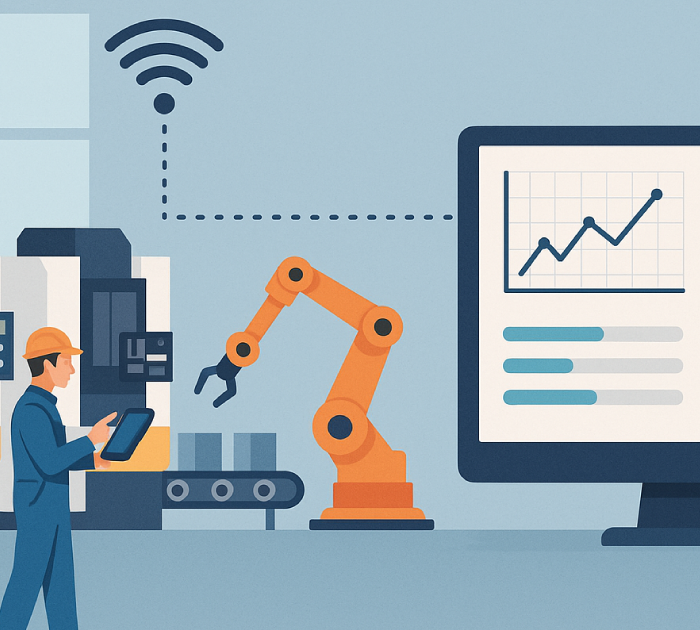In a world where digital ecosystems run entire supply chains, your ERP, PIM, and WMS platforms are more than just software—they are the foundation of your operations. They store sensitive data, manage customer interactions, control inventory, and support product information across every sales channel. This also makes them prime targets for cyberattacks, data breaches, and process manipulation.
As companies adopt more integrations, automations, and cloud systems, security risks increase. Protecting these platforms is no longer a task for the IT team alone—it’s a strategic business priority. Let’s explore how organizations can secure their ERP, PIM, and WMS ecosystems from both internal and external threats and stay resilient in a connected world.
Why Your Connected Ecosystem Is More Vulnerable Than Ever
ERP, PIM, and WMS systems are designed to work together seamlessly. While this integration improves efficiency, it also creates more access points that cybercriminals—or even internal users—can exploit.
Here are some of the most common risks companies face:
External Threats
- Ransomware attacks targeting ERP and warehouse operations
- API vulnerabilities from poorly secured integrations
- Credential theft through phishing or social engineering
- Cloud misconfigurations exposing sensitive product or customer data
- Supply chain attacks targeting third-party software
Internal Threats
- Unauthorized data changes by employees or vendors
- Over-permissioned accounts that allow too much access
- Manual errors caused by lack of system training
- Intentional manipulation of inventory, pricing, or internal records
Because these systems manage critical functions—orders, inventory, product data, financials—the impact of a breach can be devastating.
Implement Zero-Trust Access Across All Systems
A zero-trust security model ensures that no user, device, or integration is trusted automatically. This is especially important when ERP, PIM, and WMS platforms interact with each other.
Key steps include:
- Enforcing multi-factor authentication (MFA) on every system
- Using role-based access control (RBAC) to limit permissions
- Monitoring account activity in real time
- Avoiding shared credentials at all costs
This approach minimizes the risk of unauthorized entry—whether intentional or accidental.
Secure All Integrations, APIs, and Data Flows
Because ERP, PIM, and WMS are interconnected, an attacker only needs to breach one system to access the rest.
To strengthen API and data integrations:
- Use encrypted data transfers (HTTPS, TLS, VPN)
- Implement API keys and rotation policies
- Disable unused integrations and endpoints
- Audit all external apps and middleware regularly
If you use Perfion PIM or warehouse extensions like Produmex WMS, ensure their integrations follow your company’s security policies and vendor best practices.
Protect Your Product Data—Your Most Overlooked Asset
Companies often focus on securing financial or customer data but forget that product data is also a high-value target. A single unauthorized change in your PIM can affect:
- online listings
- compliance documents
- pricing
- warehouse operations
- supply chain partners
To protect product data:
- Use version control
- Automate data validation rules
- Track all changes with audit trails
- Set approval workflows before publishing information
This ensures your ecosystem remains accurate and tamper-proof.
Strengthen Your Warehouse and Inventory Security
Your WMS is at the heart of your operations. Attackers know this—and internal users know how to manipulate it.
To secure your WMS:
- Monitor inventory adjustments for unusual activity
- Set clear separation between warehouse roles
- Automate counting and reconciliation processes
- Connect IoT sensors securely to avoid infiltration
A protected WMS reduces fraud, human error, and operational downtime.
Train Your Teams and Build a Security-First Culture
Technology alone cannot protect your ecosystem. Your people play a critical role in preventing failures and spotting risks early.
Every team member should be trained on:
- identifying phishing threats
- using strong passwords
- following data-handling policies
- reporting suspicious activity immediately
Continuous education helps prevent the majority of internal risks.
Conclusion: Your Ecosystem Is Only as Strong as Its Weakest Link
Securing your ERP, PIM, and WMS ecosystem isn’t a one-time project—it’s a continuous strategy. With the right access controls, integration security, product data governance, and team training, your company can reduce risks dramatically and operate with confidence.
A connected digital ecosystem is powerful. A secure one is unstoppable.
Use MFA, role-based access, encrypted integrations, and continuous monitoring. Securing user accounts and API connections significantly reduces vulnerability across your connected ecosystem.
Internal threats include over-permissioned users, unauthorized data edits, manual errors, and intentional manipulation of inventory or product data. Strong access controls and audit trails help prevent these issues.
Product data affects sales, compliance, and operations. A single unauthorized change can disrupt eCommerce, WMS, and ERP processes. Version control and approval workflows keep product information accurate and secure.






